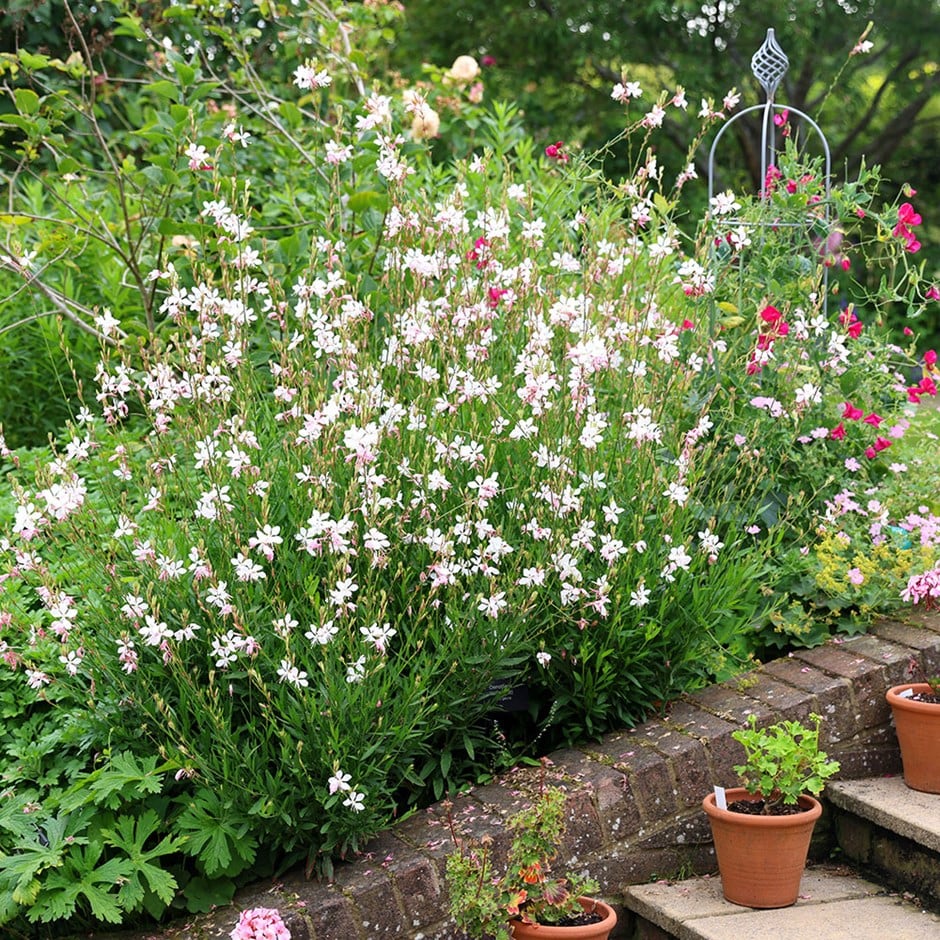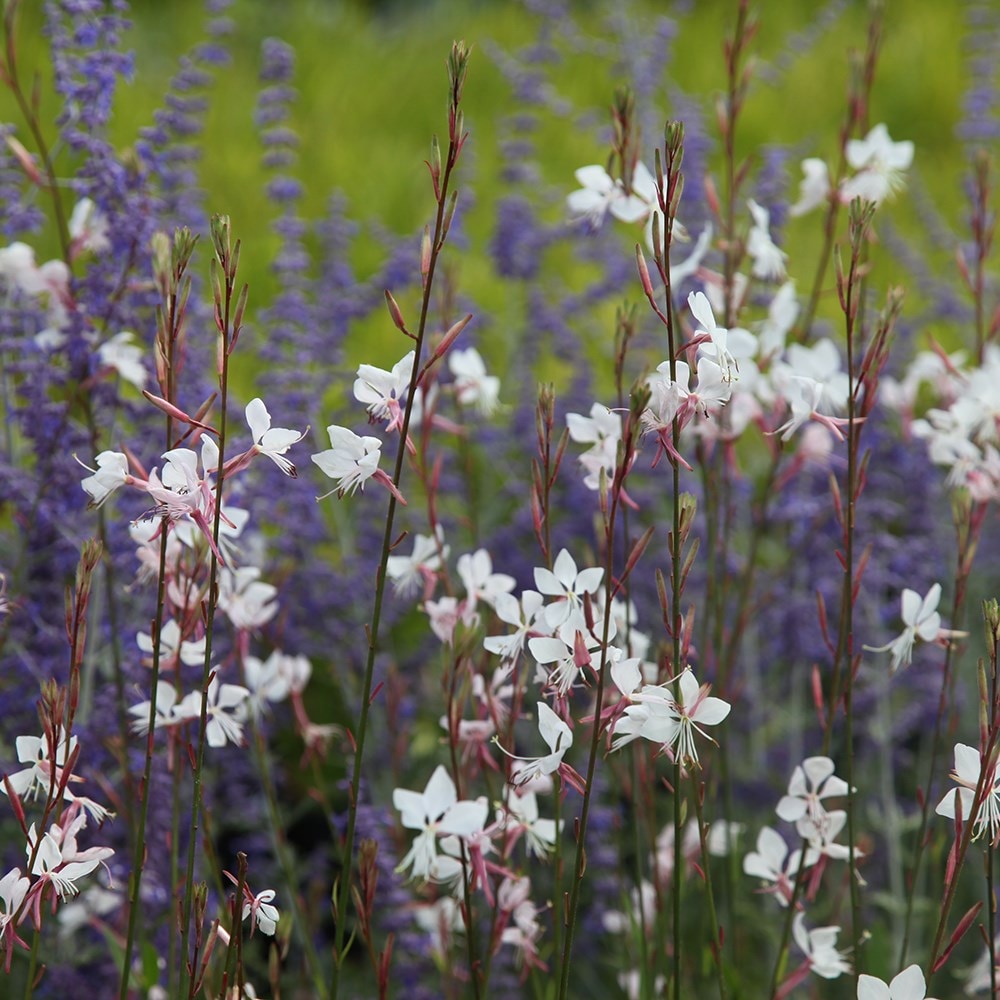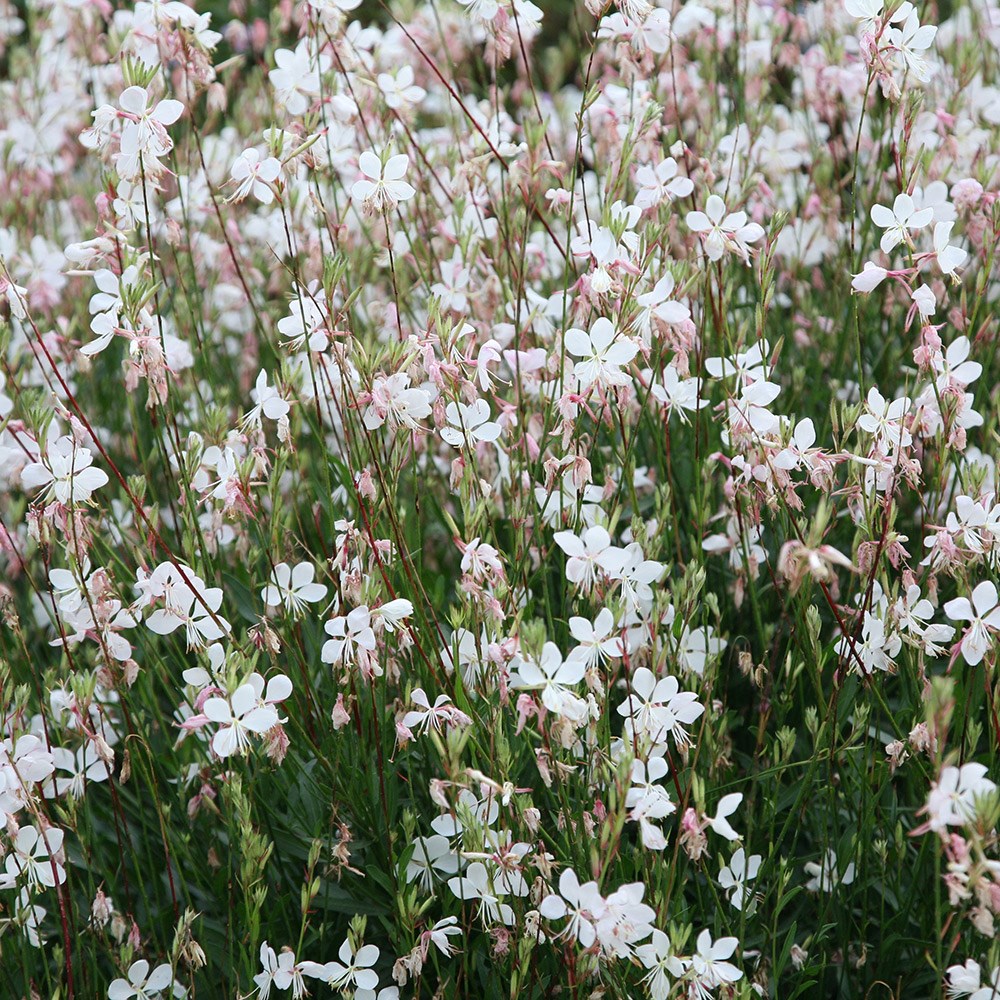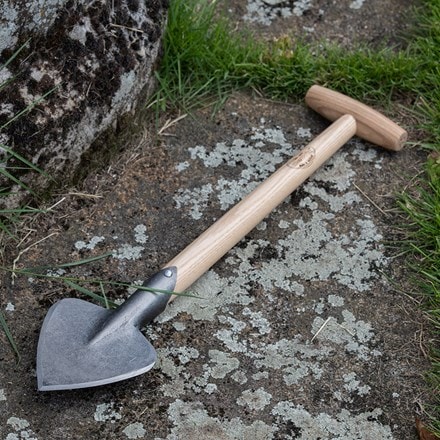Oenothera lindheimeri
gaura ( syn. Gaura lindheimeri )
- 9cm pot
- £8.99
- In stock (shipped within 2-3 working days)
- 3 × 9cm pots
- £19.99 £6.66 each
- In stock (shipped within 2-3 working days)
- 6 × 9cm pots
- £37.99 £6.33 each
- In stock (shipped within 2-3 working days)
Delivery options
- Standard £5.99
- Position: full sun
- Soil:moderately fertile, moist but well-drained soil
- Rate of growth: average to fast
- Flowering period: May to September
- Hardiness: frost hardy (may need winter protection)
A graceful, hazy plant with airy spikes of white, star-shaped flowers with long anthers like daddy long-legs, held on slender stems from May to September.
This exceptionally long-flowering perennial looks equally at home in an informal cottage-style garden or among soft grasses in a new perennial border.
Once established, Oenothera lindheimeri will take drought in its stride while soaking up the sun, and if given space, its wispy stems will lean over plants and pathways.
This exceptionally long-flowering perennial looks equally at home in an informal cottage-style garden or among soft grasses in a new perennial border.
Once established, Oenothera lindheimeri will take drought in its stride while soaking up the sun, and if given space, its wispy stems will lean over plants and pathways.
Choose a site that mimics the native prairie location in which the plant thrives such as a sunny site with modestly fertile, well-draining soil. Avoid backfilling with compost (unless the soil is particularly heavy, or poorly drained) as nutrient-rich soil can result in leggy growth and fewer flowers.
Initially, water deeply but infrequently to encourage deep root development, then reduce watering as the plants establish except in prolonged dry spells. A light mulch in spring will help retain moisture and suppress weeds, but keep it away from the crown to avoid stem rot.
As winter approaches, leave the spent foliage in place—it adds architectural interest with its russet tones and helps protect the crown from frost. In early spring, cut back the plants to about 15cm (6in) from the ground, and divide congested clumps every 3-4 years to maintain their vigour. Adding a thicker, dry mulch layer in the late autumn will offer additional winter protection for this perennial.
Please be aware that purplish-brown spotting can appear on gauras at certain times of the year and/or during certain periods of the plant's life cycle. This is not a disease but a physiological response to cold temperatures, and occurs when new growth has encountered unseasonably chilly conditions. It will not affect the plant's vigour or flowering potential and will often improve in warmer weather.
Initially, water deeply but infrequently to encourage deep root development, then reduce watering as the plants establish except in prolonged dry spells. A light mulch in spring will help retain moisture and suppress weeds, but keep it away from the crown to avoid stem rot.
As winter approaches, leave the spent foliage in place—it adds architectural interest with its russet tones and helps protect the crown from frost. In early spring, cut back the plants to about 15cm (6in) from the ground, and divide congested clumps every 3-4 years to maintain their vigour. Adding a thicker, dry mulch layer in the late autumn will offer additional winter protection for this perennial.
Please be aware that purplish-brown spotting can appear on gauras at certain times of the year and/or during certain periods of the plant's life cycle. This is not a disease but a physiological response to cold temperatures, and occurs when new growth has encountered unseasonably chilly conditions. It will not affect the plant's vigour or flowering potential and will often improve in warmer weather.



